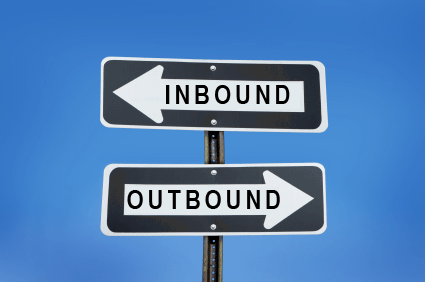Inbound Marketing vs Outbound Marketing; Which Costs More?
 Inbound marketing is taking the business world by storm. In just the last year, the difference between the amounts that companies spend on inbound marketing and the amount for traditional, outbound marketing grew by 50 percent. Organizations across the country are making up their minds about where their finances are best spent, and the data could not be clearer.
Inbound marketing is taking the business world by storm. In just the last year, the difference between the amounts that companies spend on inbound marketing and the amount for traditional, outbound marketing grew by 50 percent. Organizations across the country are making up their minds about where their finances are best spent, and the data could not be clearer.
This is according to the new “State of Inbound Marketing” study by HubSpot, which tracks how marketing practices and industry trends are transforming the world of business. The report also offers a clear reason for the trend: Compared to the old outbound strategy, inbound advertising is a bargain. Organizations that focus on inbound marketing strategies reported a 61 percent lower cost per lead, on average, than those still dominated by outbound marketing.
To know why the inbound approach delivers such spectacular results, it’s important to take a closer look at just what inbound marketing is, how it works, and how the internet and e-commerce make an inbound strategy not only possible, but increasingly essential.
Outbound marketing is a simple, blunt instrument: You buy advertisements, send out direct mail, hire a telemarketer to cold-call potential customers. You expect a minuscule response rate, because most of the people you reach will have no need for your product even if they don’t ignore you. But everyone else was doing the same thing, because it was the best tool that you had.
Now, that’s no longer true. Nearly every business has a website now, and most consumers are online. For a growing number, the Internet is the first place they check when they want information about a product or service that they want. In other words, you don’t need to throw your resources at campaigns designed simply to get your customers in the door, because they’re already looking for you. Instead, you can devote your energy to making sure they can find you.
As the field of inbound advertising grows, the number of tools you can use to attract leads has expanded along with it. Building a high-quality website is essential, as is making sure to include the keywords that a customer is most likely to associate with your business and optimize the site to appear in their search engine results. Make sure the content on your site is fresh, engaging and original. Two of the fastest-growing inbound marketing tools are blogging, which 81 percent of businesses now describe as useful, important or critical, and a robust presence on social media, which 62 percent of companies reported becoming more important as a source of leads.
Once you’ve drawn these prospects in, you can use your website to entice them to provide their information in exchange for some special product — a newsletter, an ebook or a video, for example — that is delivered to them right away. Not only does this provide extra value for your website’s visitors, but it gives you a list of new leads who have already opted in by expressing an interest in your business.
HubSpot’s survey shows that each one of the three inbound marketing channels — search engine optimization, blogging and social media — delivers better results at a lower cost than the old outbound staples of direct mail, telemarketing, paid search and trade shows. And with online search tools becoming ever more sophisticated and customers turning to the Internet for more and more business, it’s not hard to understand why so many businesses are ramping up their inbound campaigns. In short, businesses can reach prospects more effectively than ever, and the state of inbound marketing is strong.

